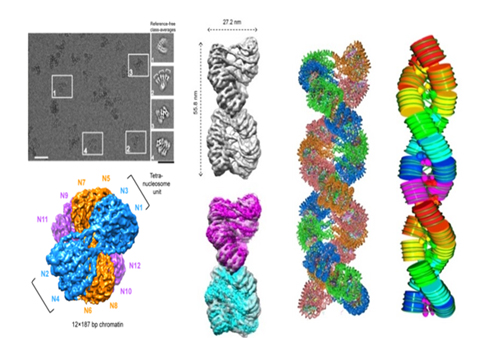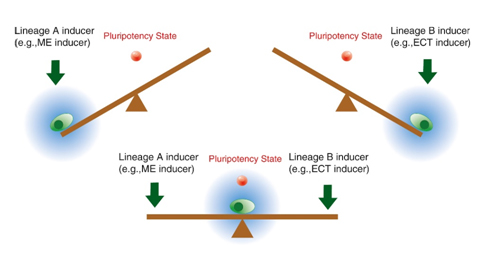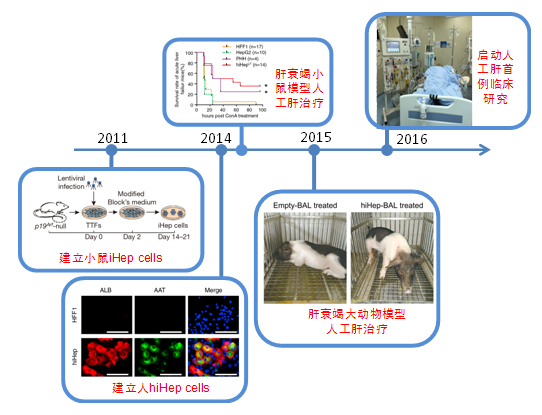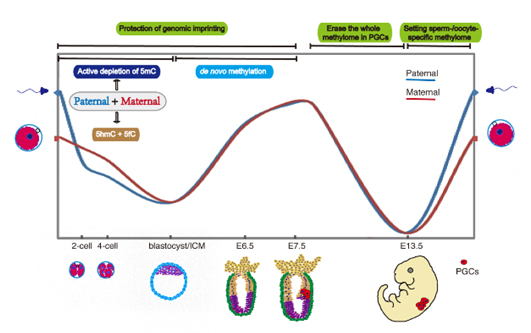The major research plan of NSFC, "The epigenetic mechanisms of cell programming and reprogramming", drives a leap-forward development in China’s epigenetic research
On January 2nd, 2018, the National Natural Science Foundation of China (NSFC) approved the completion of the major research plan of “The epigenetic mechanisms of cell programming and reprogramming”. The plan was initiated in October, 2008 and the financial support was completed by the end of 2016. The program granted 156 awards with a total funding 19 million yuan, including 68 awards in fostering project, 23 awards in key supporting projects, 59 awards in integration projects. Applications covered life science, chemistry and information sciences.
In this plan, multidisciplinary approaches have been adopted to discover the rules and characteristics of epigenetic information establishment, maintenance and function during cell programming and reprogramming; to elucidate the epigenetic mechanisms involved in cell proliferation, differentiation, development and environmental adaptation; to reveal the composition, evolution and operation of the whole epigenetic network. The plan achieved series of breakthroughs with major international implications, including:
1) breakthroughs in elucidation of epigenetic regulation mechanisms: Many new epigenetic molecules involved in DNA methylation or histone modification were identified. A more deepened understanding of nucleosome assembly regulation, histone code interpreting, signal transduction pathways involved in the establishment and maintenance of epigenetic information, and higher-order chromatin structure regulation were achieved. Especially unraveling the higher-order chromatin structures of 30-nm chromatin fiber resolved a fundamental issue in molecular biology (Figure 1).
2) establishment of haploid embryonic stem cells and semi-cloned technology, discovery of new regulatory theories and techniques in somatic cell reprogramming, such as the full-chemical reprogramming techniques and the “Seesaw” model of cell reprogramming (Figure 2).
3) fruitful findings in understanding cell differentiation and trans-differentiation, embryonic development and disease related epigenetic mechanisms: especially great progress has been made in research and development in bio-artificial liver supporting system (Figure 3)
4) achievements in establishing DNA methylome in various species and depiction of the origin and evolution of epigeneticlandscape: Genome-wide DNA demethylation was found during embryogenesis and both paternal and maternal genomes undergo active DNA demethylation (Figure 4)
With the funding of the research plan, 815 research papers were published in international authoritative academic journals, including top journals such as Nature (8), Science (2), Cell (11), Nature Publishing Group (38), Cell Stem Cell (11), Cell Research (46) and PNAS (25). The talented finding, “Structures of 30nm chromatin fiber”,has been written in the recent version of international mainstream textbooks, “Lehninger Principles of Biochemistry” and “Fundamentals of Biochemistry”. 37 international patents were applied and several outstanding honors were awarded, including National Natural Science Award (2rd class, 2), National Science and Technology Progress Award (1st class, 1; 2rd class, 4). Four research findings achieved the honors of The Ten Major Advances in Science and Technology in China.
Under the plan funding, many outstanding Chinese scientists in the field of epigenetics and cell-fate determination are fostered who now represent the top level of the field in the world. 5 people from the Expert advisory group become fellows of Chinese Academy of Science due to their excellent performance. 15 researchers within this plan were funded by Excellent Young Scientists Fund and 16 were funded by National Science Fund for Distinguished Young Scholars. 9 researchers were funded by Science Fund for Creative Research Groups. Many young talents, including 84 post-doctoral fellows, 441 doctoral candidates and 225 Master candidates got their degrees under the support of the program. These outstanding academic backbones, top talents and innovative research teams provide an important guarantee for the comprehensive improvement and sustainable development of China’s epigenetic research in future.

Figure 1 Unraveling the 3D organization of 30-nm chromatin fibers by Cryo-electron microscopy, (Song et al. Science, 2014, 344:376-80)

Figure 2 The Seesaw model for induction of pluripotency in mouse somatic cells with lineage specifiers. (Shu et al, Cell, 2013, 153:963-975)

Figure3 iHepgeneration and application.(Huang et al, Nature 2011, 475: 386-9; Shi et al, Cell Res, 2016,26: 206-16)

Figure 4 Active demethylation ofmaternal and paternal genomes in mammals. (Wang, et al, Cell,2014, 157:979-991)
Contact Us

National Natural Science Foundation of China
Add: 83 Shuangqing Rd., Haidian District, Beijing, China
Postcode: 100085
Tel: 86-10-62327001
Fax: 86-10-62327004
E-mail: bic@nsfc.gov.cn
